In my 20s, I lived in a big city on the Northeast coast. Considering that this was a big, dirty, polluted city, I was a bit shocked when I overheard some colleagues planning a weekend trip to go mushroom foraging.
I joined them and was amazed at how many mushrooms we found. And it turns out mushrooms aren’t the only wild edibles you can find in the city.
While these all aren’t exactly the tastiest foods you can eat, you will be glad they are there in a survival situation.
Roses
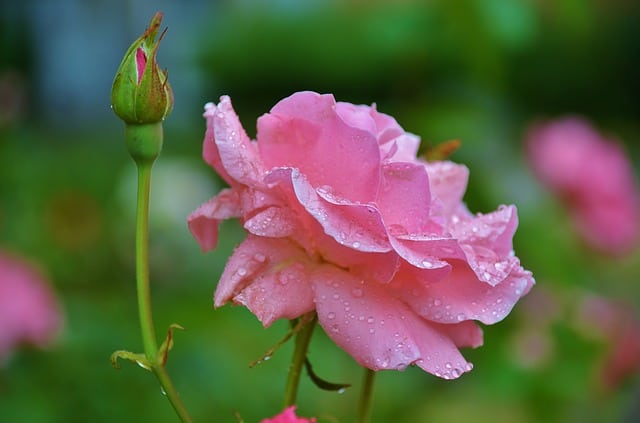
In the USA, we use roses as decorations. But, in many other parts of the world, making sweets and even things like ice cream out of rose petals is common. It turns out that they are pretty tasty. Just try to avoid eating the white part on the end of the petals, as this part is very bitter.
You can chop rose petals into a salad, mix them with butter, spread them on bread, make jam, or munch them raw in starvation situations.
If you try eating roses in a non-survival situation, make sure you choose organic ones. Roses are one of the most heavily sprayed plants!
Dandelions
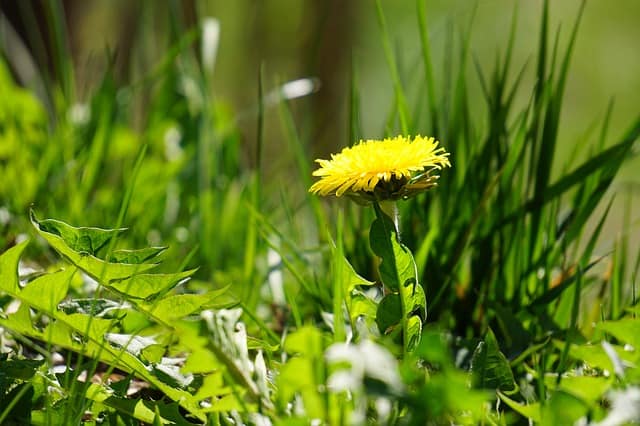
Many people know that dandelions are edible but don’t know how to choose and eat them. Here are some tips:
- Young leaves are the best. By the time the flower blooms, the leaves will be VERY bitter. Use young leaves in salads.
- Older leaves can be cooked to get rid of some of the bitterness.
- Dandelion flowers can also be eaten. Choose flowers that haven’t bloomed yet, as they will have the mildest taste.
- In the fall, dandelion roots can be harvested and dried. Roast them, and they make a good coffee substitute. (Learn how to make greens powder.)
Acorns
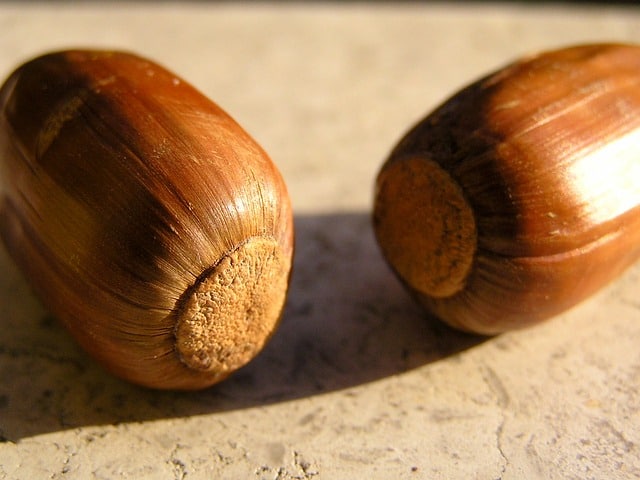
Acorns are a great urban edible plant because they are full of protein. The problem is that they contain tannins which make them incredibly bitter and will upset your stomach.
You must leach out the tannins before you eat acorns!
We have a great post on preparing acorns to make them edible. You need to shell them first (you can do this in bulk by smashing a bunch of acorns with a big rock and then separating the meat from the shells).
Soak the acorns in warm water for a few hours to leach out the tannins. Toss the water and then taste the acorns. If they are still bitter, repeat the soaking process until they don’t taste bitter anymore.
Stinging Nettles
This is one of my favorite urban edible plants. It is chock full of vitamins and minerals like iron and magnesium. Pick the small leaves at the top, which have a pleasant mild taste. The bigger leaves are more bitter but still edible.
Make sure you wear gloves while picking them, or you will have stings all over your hands (if you don’t have gloves, just put plastic bags over them instead). Once you cook the nettles, they don’t sting anymore. Great for stir-frying or steaming.
Fiddlehead Ferns
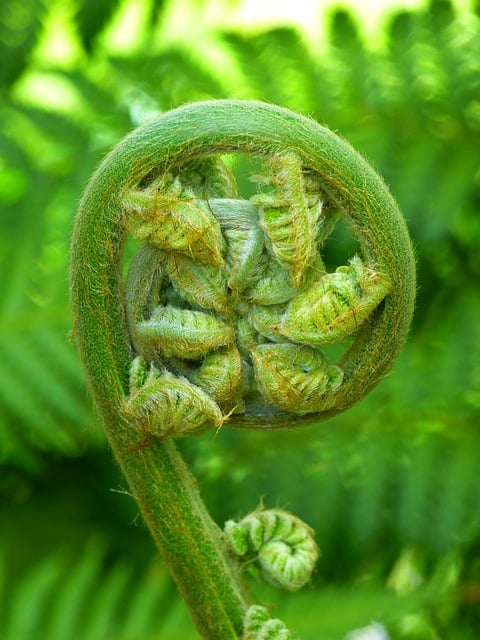
Fiddlehead ferns are just ferns that haven’t become ferns yet. If you live in New England, you might be able to find fiddlehead ferns during their short season in spring.
They are delicious and have a nice crunch to them when eaten raw.
Prickly Pear Cactus
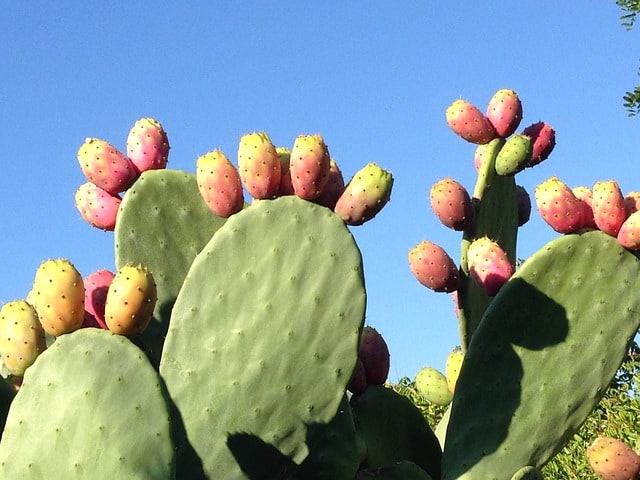
In the western parts of the USA, prickly pear cacti grow in the wild, and people often have them in their gardens. So, when SHFT, go ahead and eat your neighbor’s garden! Both the fruit and the paddles are edible. You’ve got to cut the prickles off first 😉
Lamb’s Quarters
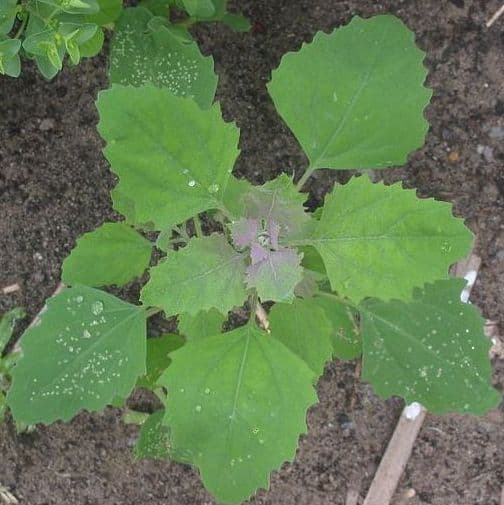
This plant grows all over the continental USA and tastes better than spinach. It is also called goosefoot or pigweed.
Walnuts
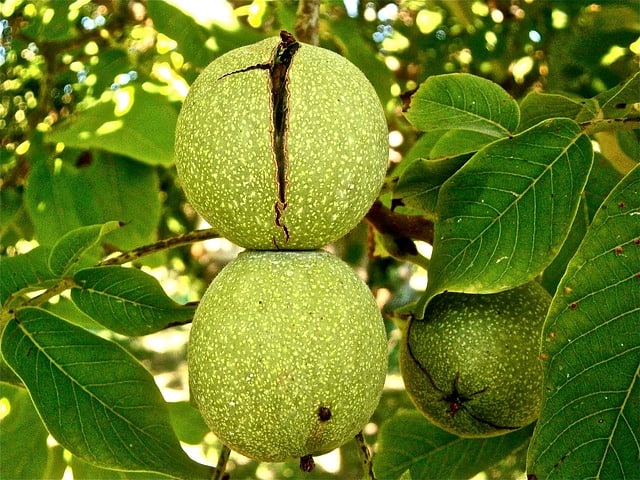
I’m surprised how many people don’t know what a walnut looks like in the wild! Once you realize how easily you can find them in city parks, you won’t want to pay $10 a pound for them ever again. And your kids will have fun banging them open to get the meat inside.
Chestnuts
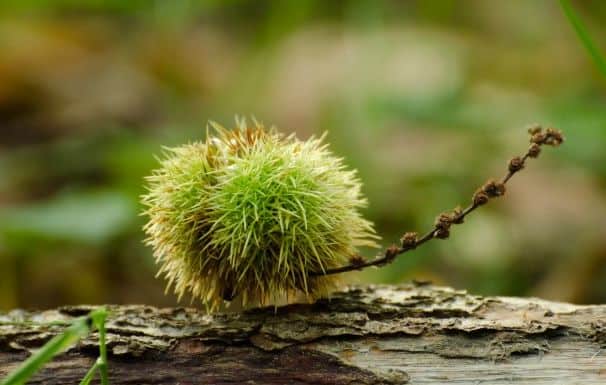
Like walnuts, chestnuts are another nut you can easily find in many parts of the USA. Just be warned that there is a difference between horse chestnuts and sweet chestnuts.
Horse chestnuts are bitter and poisonous (though you’d have to eat a lot of them to kill you). Sweet chestnuts are the ones we eat on Thanksgiving.
Daylilies
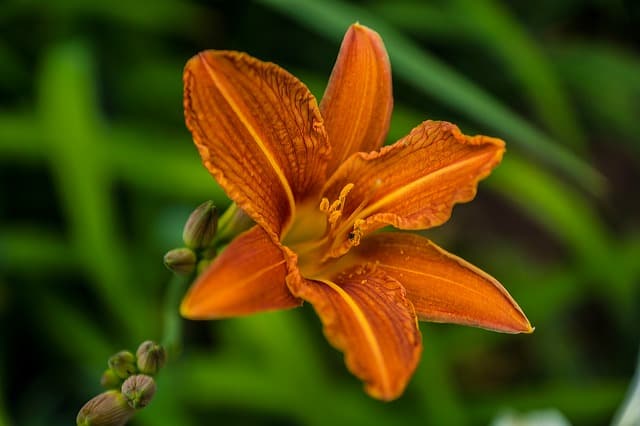
These are some of the tastiest edible plants in urban environments. The flowers taste fantastic and can be eaten raw or sauteed in a bit of butter. The stalks are edible but don’t taste as good – they are slightly bitter and harsh.
Daylilies don’t have bulbs like other lilies. They have little tubers that look like sweet potatoes. Guess what? They taste like sweet potatoes too! Saute the tubers in butter or boil and mash them. Don’t eat the tubers raw because it can give you indigestion.
Chickweed (Stellaria media)
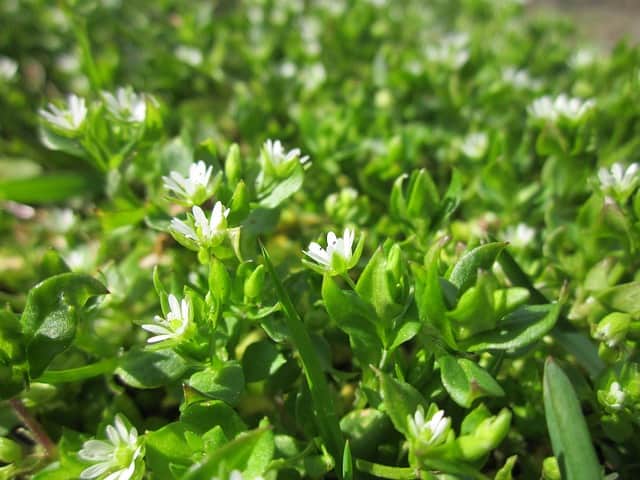
Chickweed is a plant that gardeners spend a lot of time trying to get rid of. But, in a survival situation, you will be glad that this plant is there. It grows pretty much anywhere that there is moist, rich soil. The stem, leaves, and flowers are all edible and can be eaten raw as a salad.
Cattail
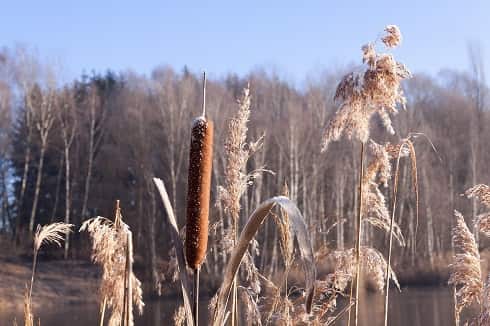
Got a marshy area near where you live? Grab some of the cattails growing there and pull up their roots. The roots are edible and taste pretty good when roasted, boiled, or baked (a bit like a potato). You can also eat the center of the stalks when they are still young in the spring.
Mushrooms
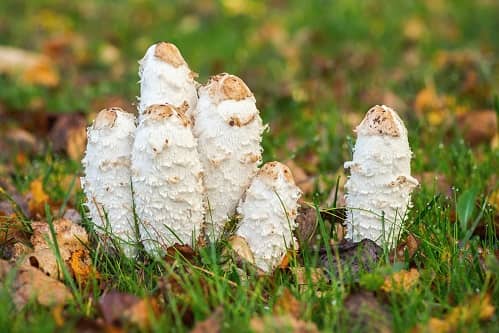
There are a bunch of edible mushrooms that can be found in urban areas, like the shaggy mane mushroom and fairy ring mushroom. I’d be cautious about eating mushrooms, you find, though. Some mushrooms are highly poisonous and can resemble edible species.
So spend some time researching edible mushrooms and maybe join a foraging group. Unless you are 100% sure that the mushroom is edible, you are better off eating one of the other edible plants you can find.
Have you tried any of these edible plants? Which ones did I miss? Post your comments below.
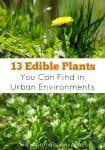
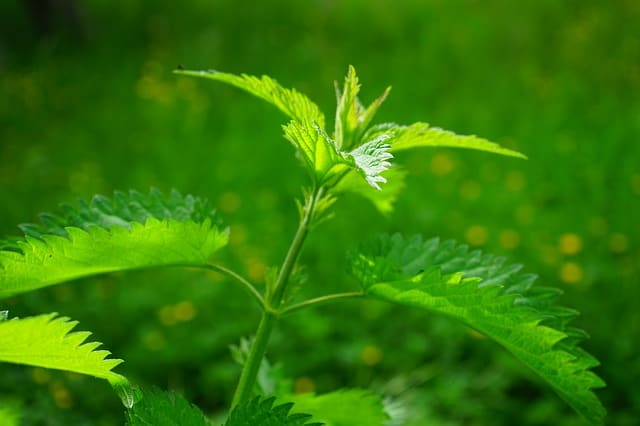
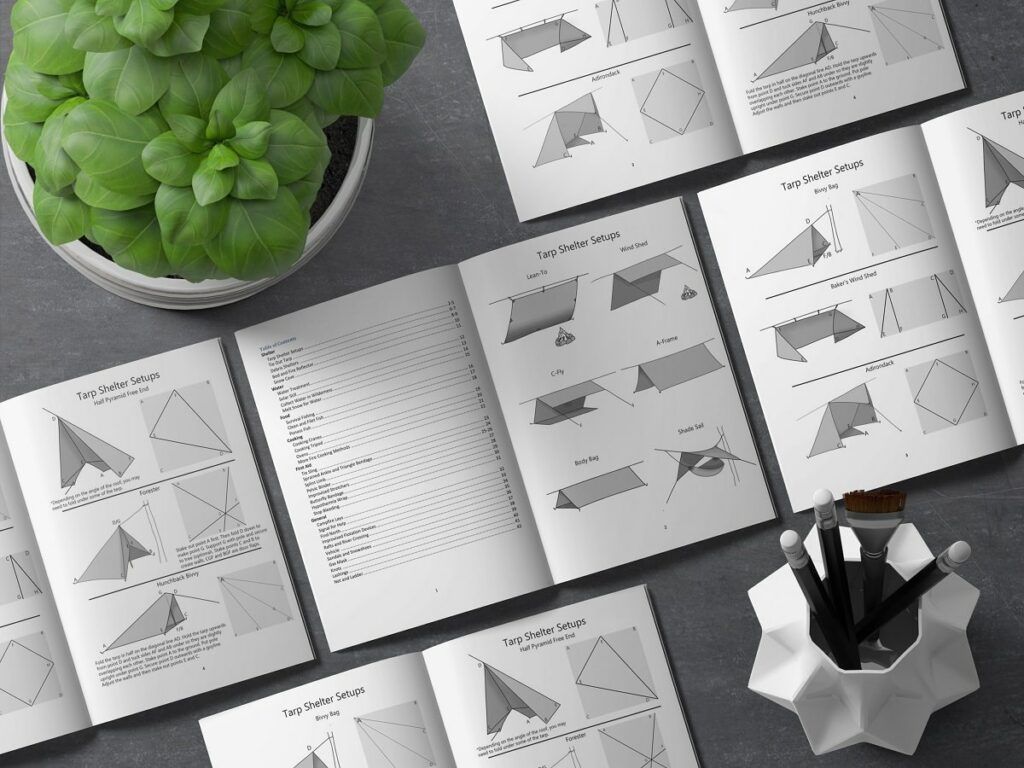

My dad was a first generation Polish immigrant and a steelworker. On off-days he frequently took us out to gather whatever was in season: wild mushrooms, blackberries, elderberries, wild grapes, fish, and small game. I’m 73 and still consider myself a hunter-gatherer. I’ve added many greens , berries and nuts which grow near the new Indiana Dunes National Park. (You can’t gather in the national park). I garden in buckets, in a small church cooperative, and in a rented city garden plot. I can no longer pull a bow or take the kickback from a rifle, but my cousin was still bow hunting. At 65 she shot, field dressed, and dragged back to the barn, a young deer. There are many of us here in NWIndiana who still live off the land as much as possible, even though we live in a “green to the white line” suburban landscape surrounded by heavy industry. Thank you for passing on info to a new generation.
Luckily, I think the younger generations are getting much more interested in this info. We are still far away from the knowledge that was commonplace during your dad’s generation though!
You forgot purslain and Jerusalem Artichokes both grow as weeds in abandoned fields and roadsides. We have the Jerusalem Artichokes growing in our yard. Started with 3 plants now have thousands of them. A word of warning about planting the Jerusalem Artichokes be sure the spot you put them is where you want them they will take over.
Rosehips make excellent tea & are loaded with vitamins. They can easily be found & picked in the fall when roses have dropped their petals. You’ll find bright red hips in their place. Great to add to your backpack food stash too as they’re very lightweight once dried. They could also be chewed on as-is, although they’d be fairly sour.
I’ve also found wild garlic, onions & mustard in urban parks, along with many medicinal mushrooms such as turkey tail, reishi etc.
I’ll second dandelion greens. They’re amazing when picked while the leaves are young. Use for food or medicine.
Wild raspberries (leaves & fruit; leaves made into tea, especially great for women), blueberries, cloud berries, salmon berries, wild asparagus, comfrey leaves & roots (culinary & medicinal), clover flowers (tea & salad), burdock, chamomile, calendula (marigold petals), lavender (tea, alcohol infusion, use to scent sugars etc) birch sap (drink), pine needles (tea), devil’s club / cat’s claw (we have these here in urban environments, for arthritic & rheumatic pain), are some others which can be used in the kitchen & medicinally. There are so many more.
Love going out & foraging
Hi Sandra – thanks for sharing some great tips, its surprising what is available even in the most unlikely places. You may also be interested in our other foraging articles.
I grew up poor here in the Pacific Northwest. One time in early spring I’m guessing I complained to Mom that there was no lettuce for a sandwich. She told me to go out and pick some young Dandelion greens, wash and dry them and they would work. I ate them until it got too warm and the greens became bitter as gaul. She taught me to gather Lamb’s Quarters out of last-years garden. I think we cooked it. We ate all the mushrooms a neighbor lady brought us out of her forest, too. Later we learned from my folks where and how to pick Chantrells and loved it during deer hunting season to get a deer AND find some Chantrells to cook with the deer liver and heart. When I was 12 we went up to Palmer Alaska and Mom taught us to eat the Wild Rose Hips, I think they’re called, that keep growing after last years petals are gone. Full of vitamin C I believe.
Really interesting comment Kay, sounds like your Mom passed down some useful skills.